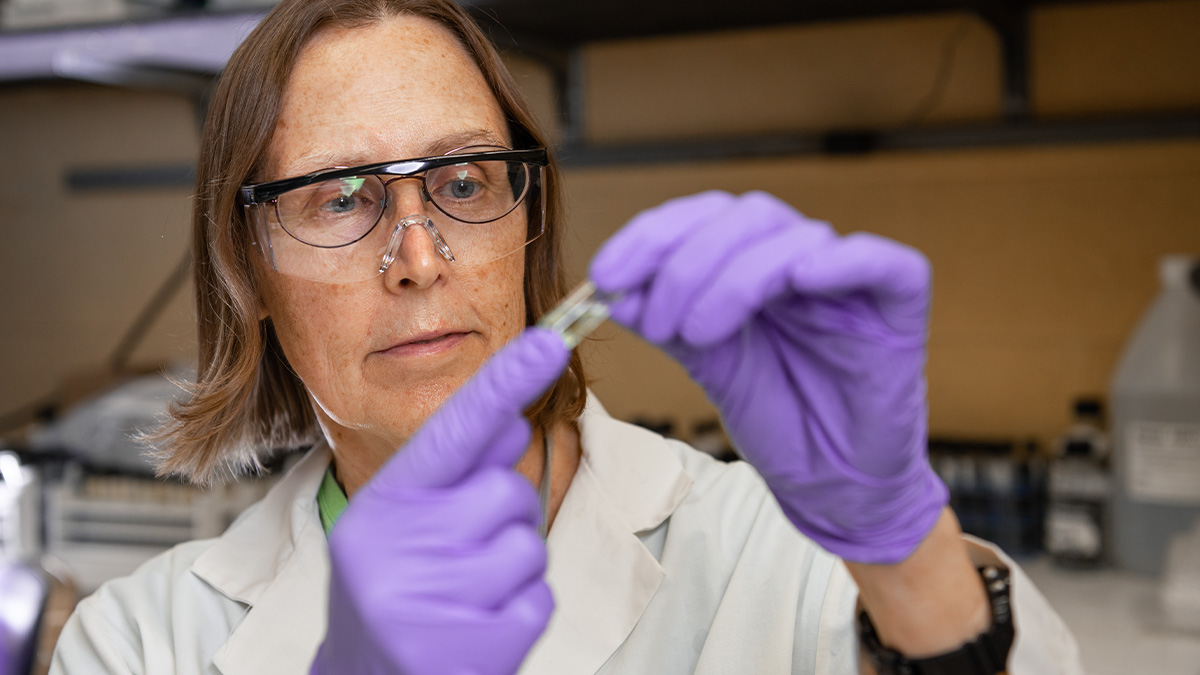A worldwide lipid leader
Biologist takes center research across the globe
By Malorie Sougéy

Ruth Welti examines a plant leaf sample at the Kansas Lipidomics Research Center.
Seek more
Learn more about Ruth Welti and the Kansas Lipidomics Research Center.
For a shining example of success, look no further than Ruth Welti, Kansas State University distinguished professor of biology and founder and director of the Kansas Lipidomics Research Center. With more than 125 publications, 86 undergraduate researchers and $10.9 million in grant funding, it’s clear that Welti has significantly influenced her field, colleagues and students.
Welti and her technical team in the College of Arts and Sciences lead the lipidomics center, which uses mass spectrometers to analyze specific types of lipids — compounds present in living organisms that don’t dissolve in water. In plants, examples of lipids include seed oils and cell membranes, which provide a site for important processes like photosynthesis.
“My lab analyzes both storage and membrane lipids, which have thousands of different chemical structures,” Welti said. “The population of lipid molecules in a particular plant or other organism is also dynamic, changing over the lifetime of an organism and rapidly in response to environmental conditions and other challenges, such as infections. We try to understand what changes occur, identify the proteins that catalyze the alterations and determine the purpose of these alterations in the life of plants.”
The Kansas Lipidomics Research Center, which Welti started in 2003 with former K-State biochemist Xuemin Wang, has provided lipid analysis to approximately 700 research groups around the world. Researchers’ work in the lab has resulted in at least 315 publications.
“One of our big-picture goals is to understand how plants, and particularly crop plants, can respond when faced with environmental challenges like bad weather — heat or cold, for example — in order to develop strategies for improved crop resilience,” Welti said.
The center includes technicians Mary Roth, Pam Tamura and Libin Yao, who analyze samples, operate the mass spectrometers, edit grants and manuscripts, and work with student researchers. Looking to the future, Welti and her team plan to continue to provide detailed information on lipid composition to colleagues doing basic and applied research aimed at crop improvement.
“I’m thankful for the incredibly competent team at the Kansas Lipidomics Research Center and for our ability to provide valuable information to researchers working to unravel the complicated roles of lipid metabolism in plant resilience and production,” Welti said.